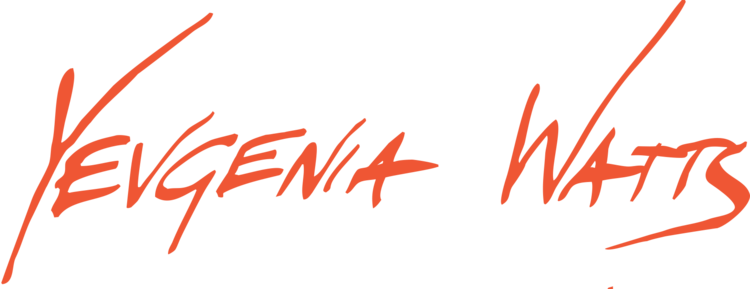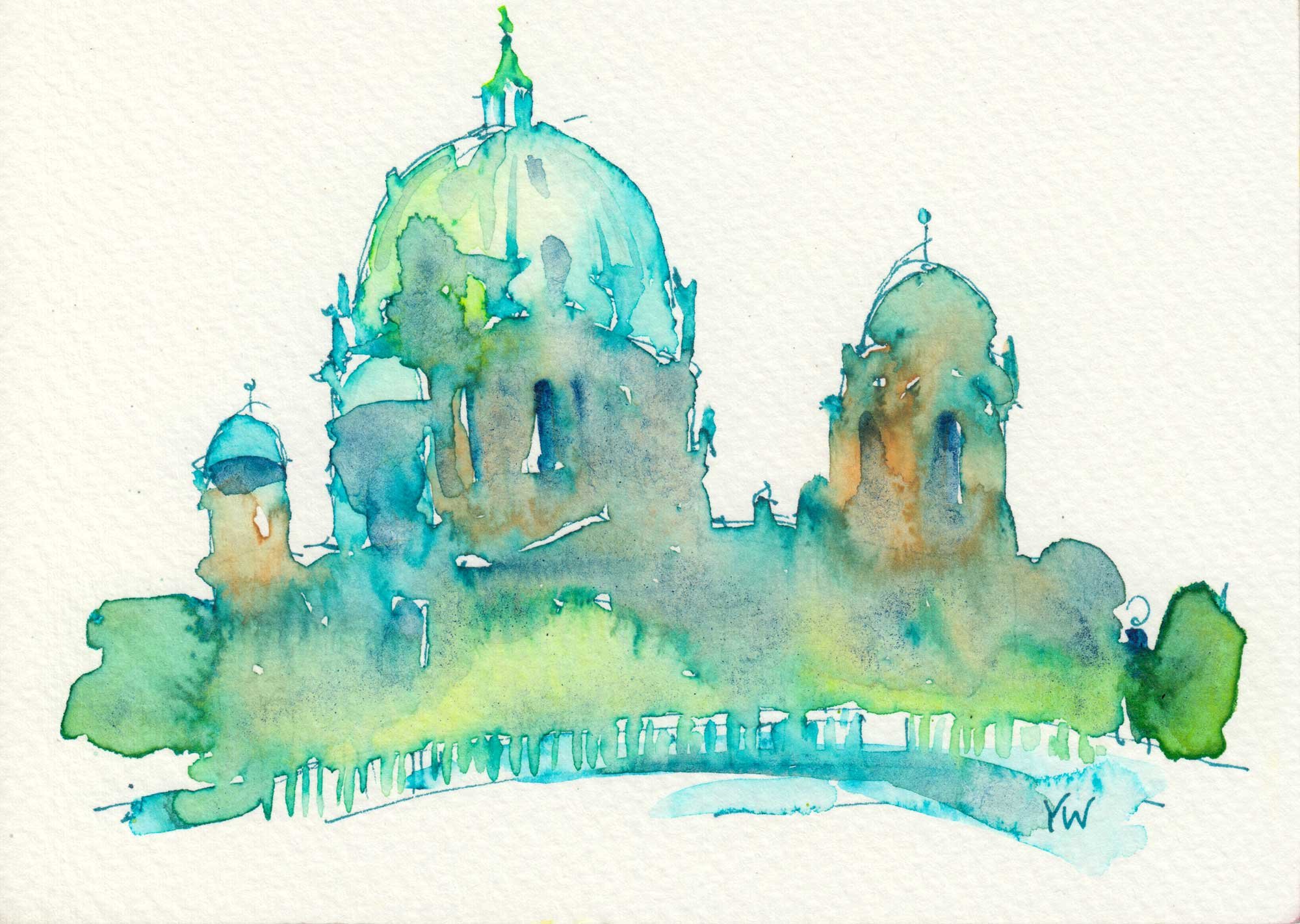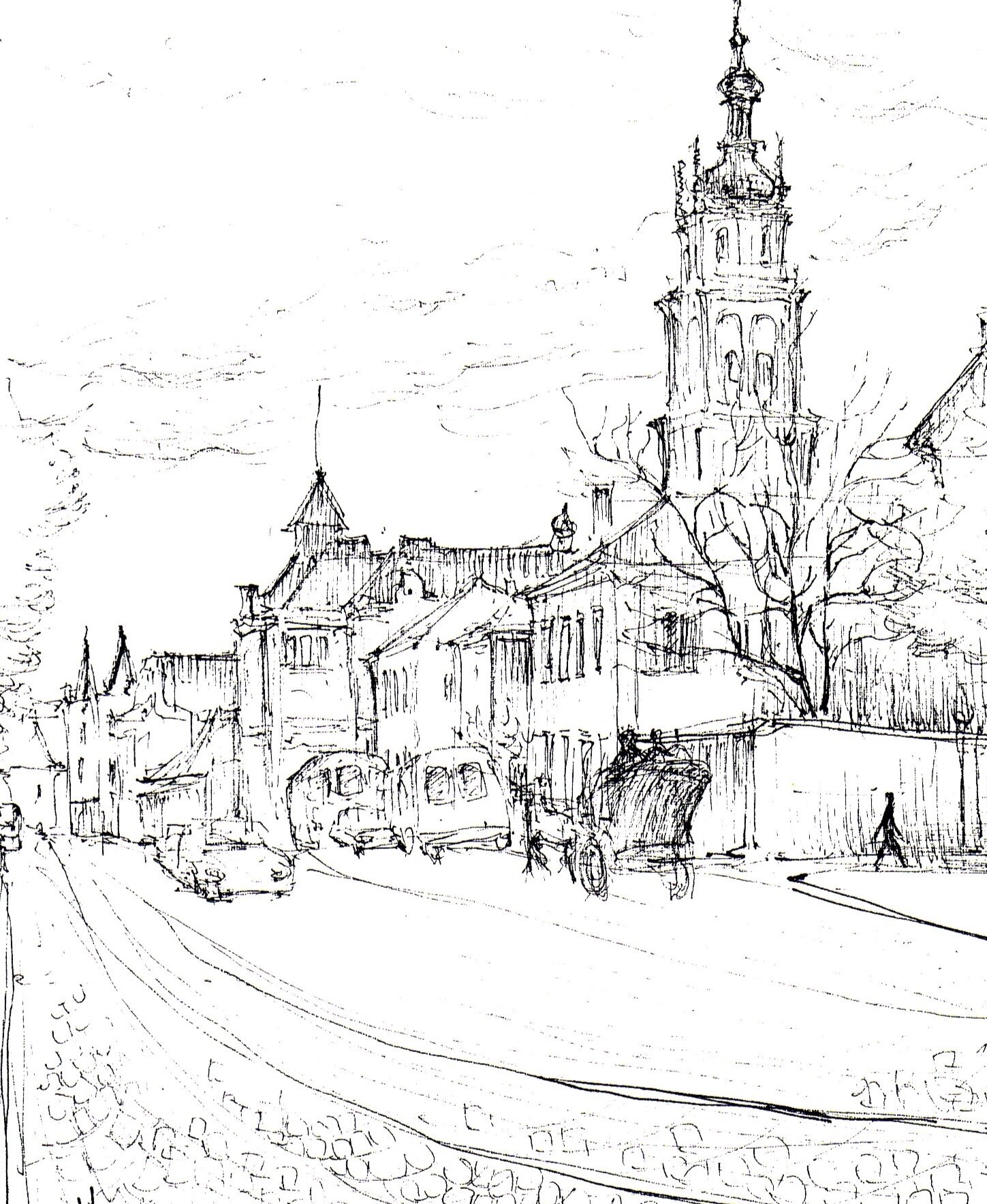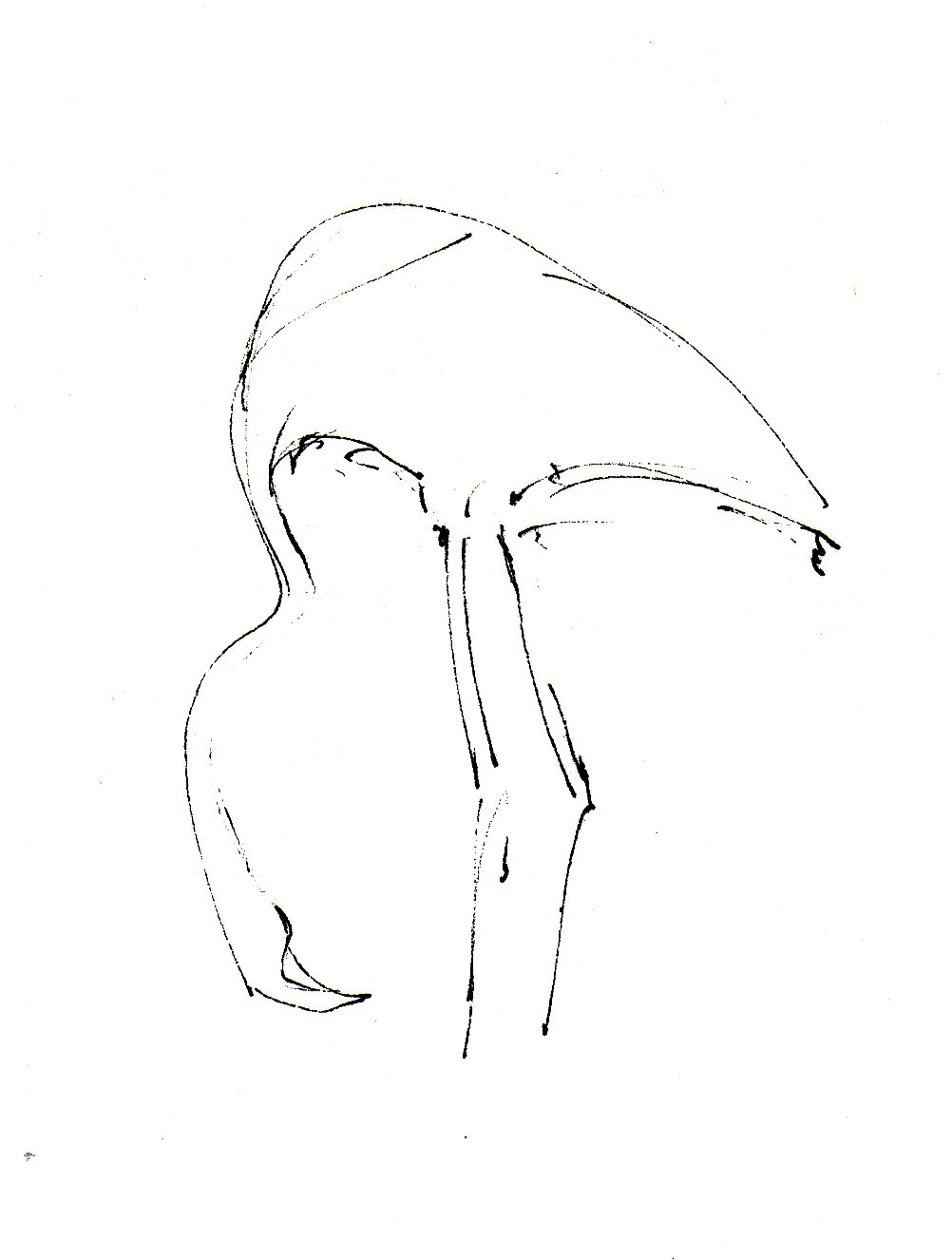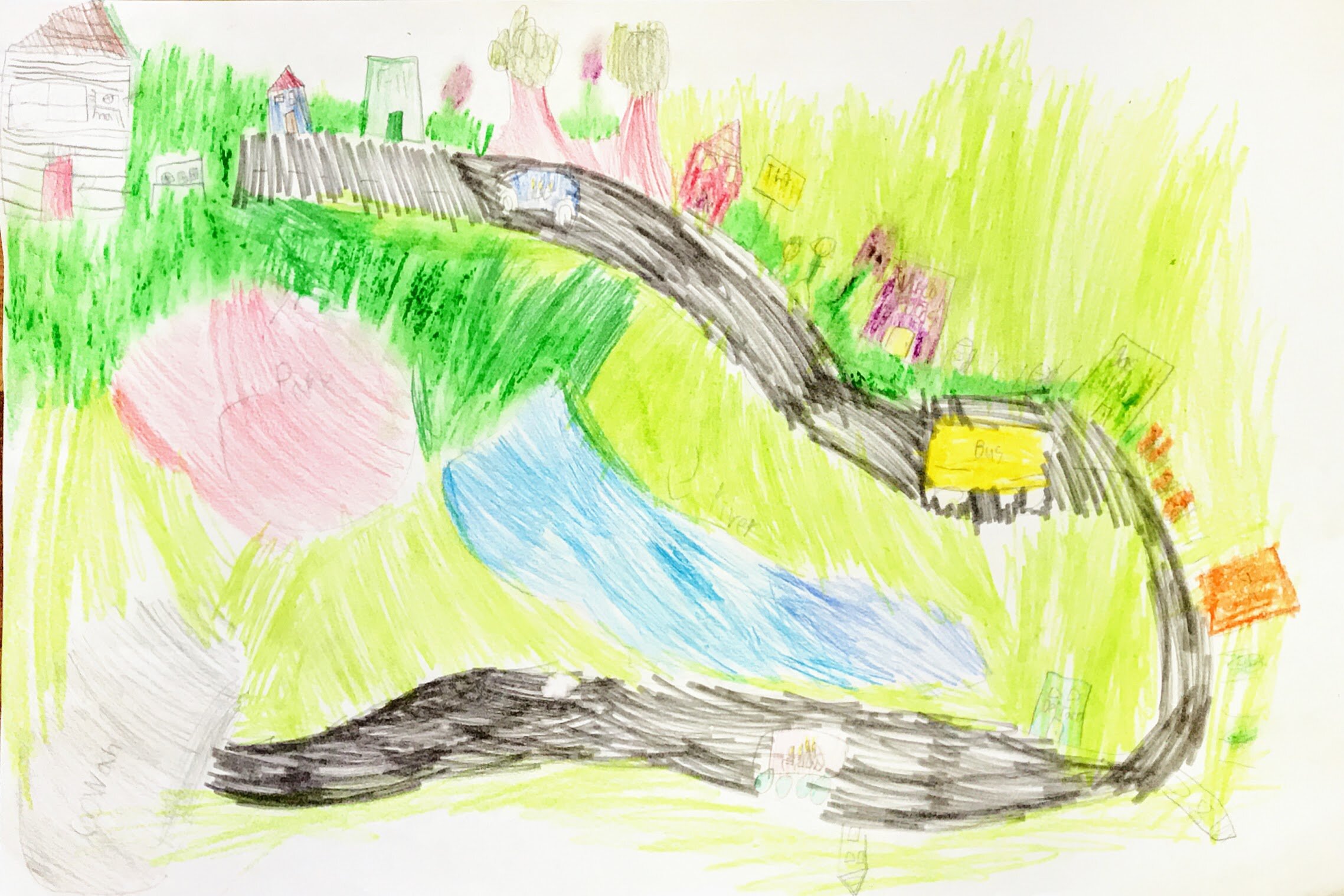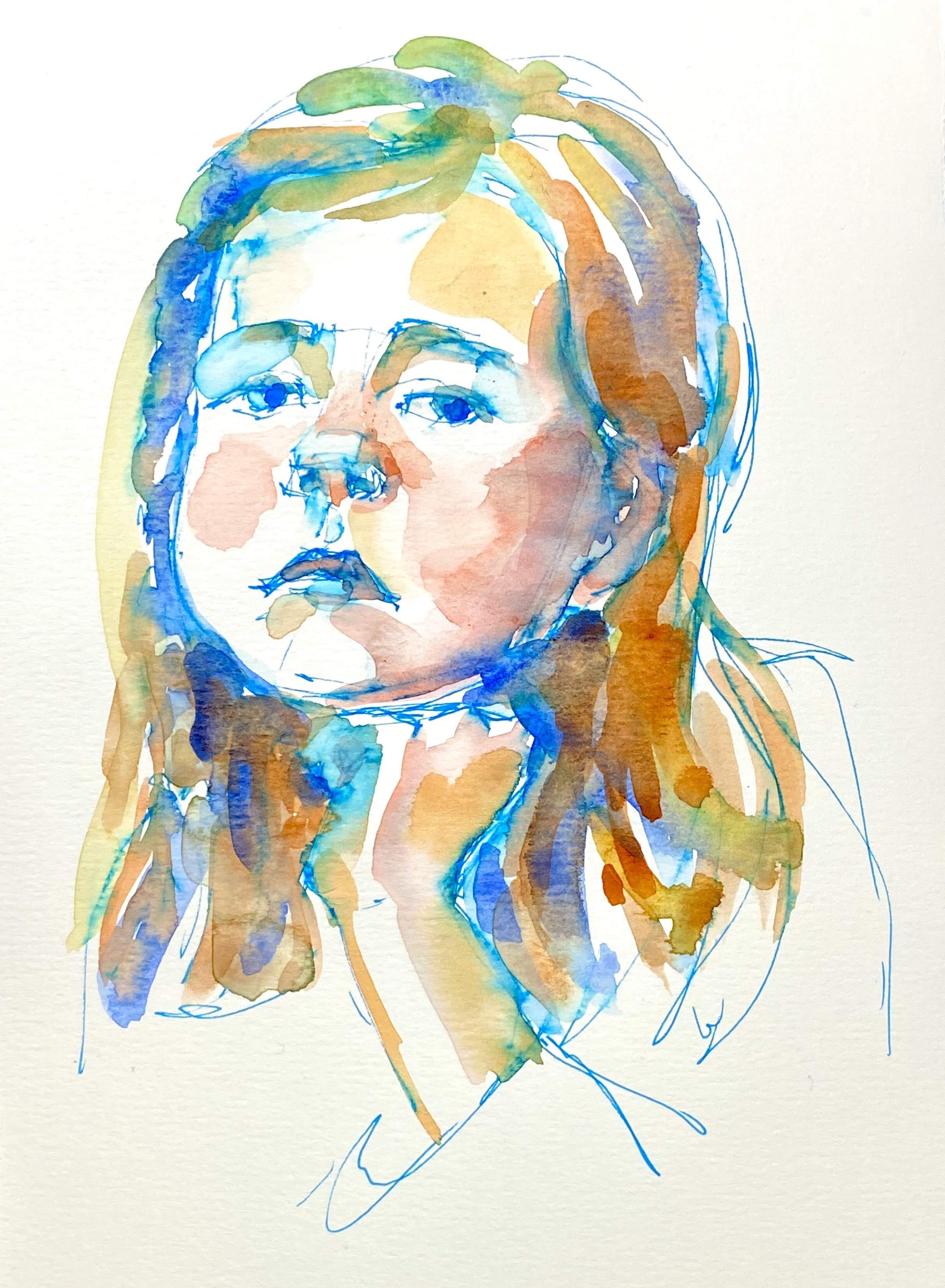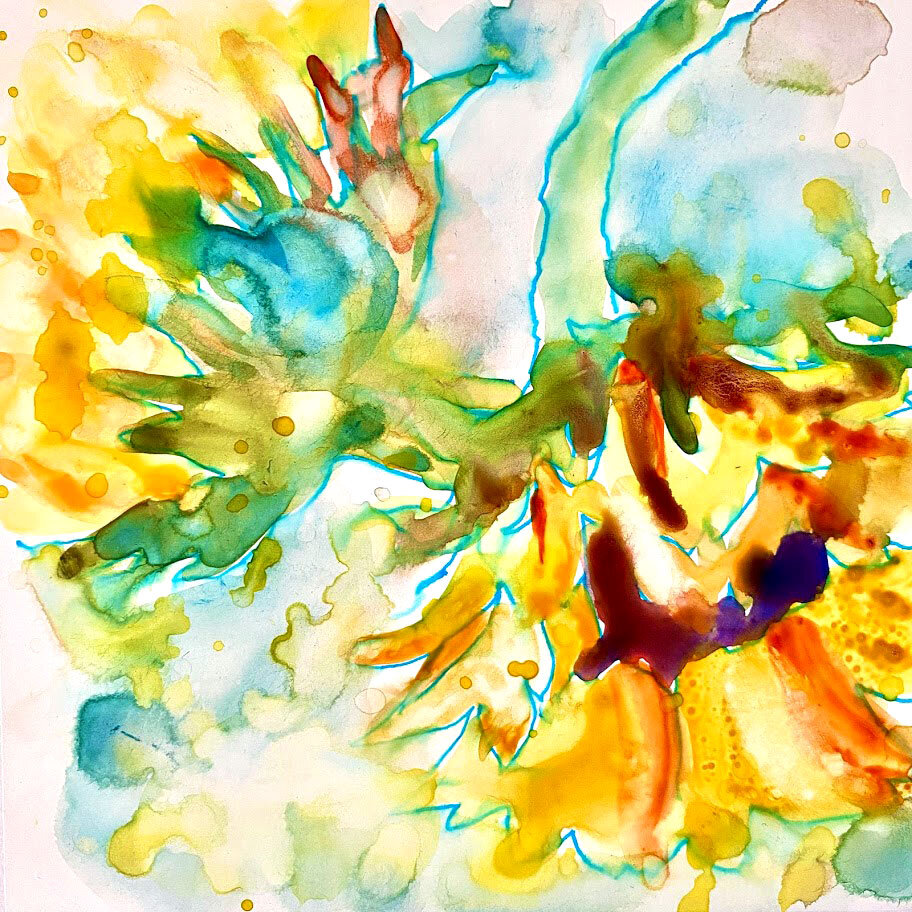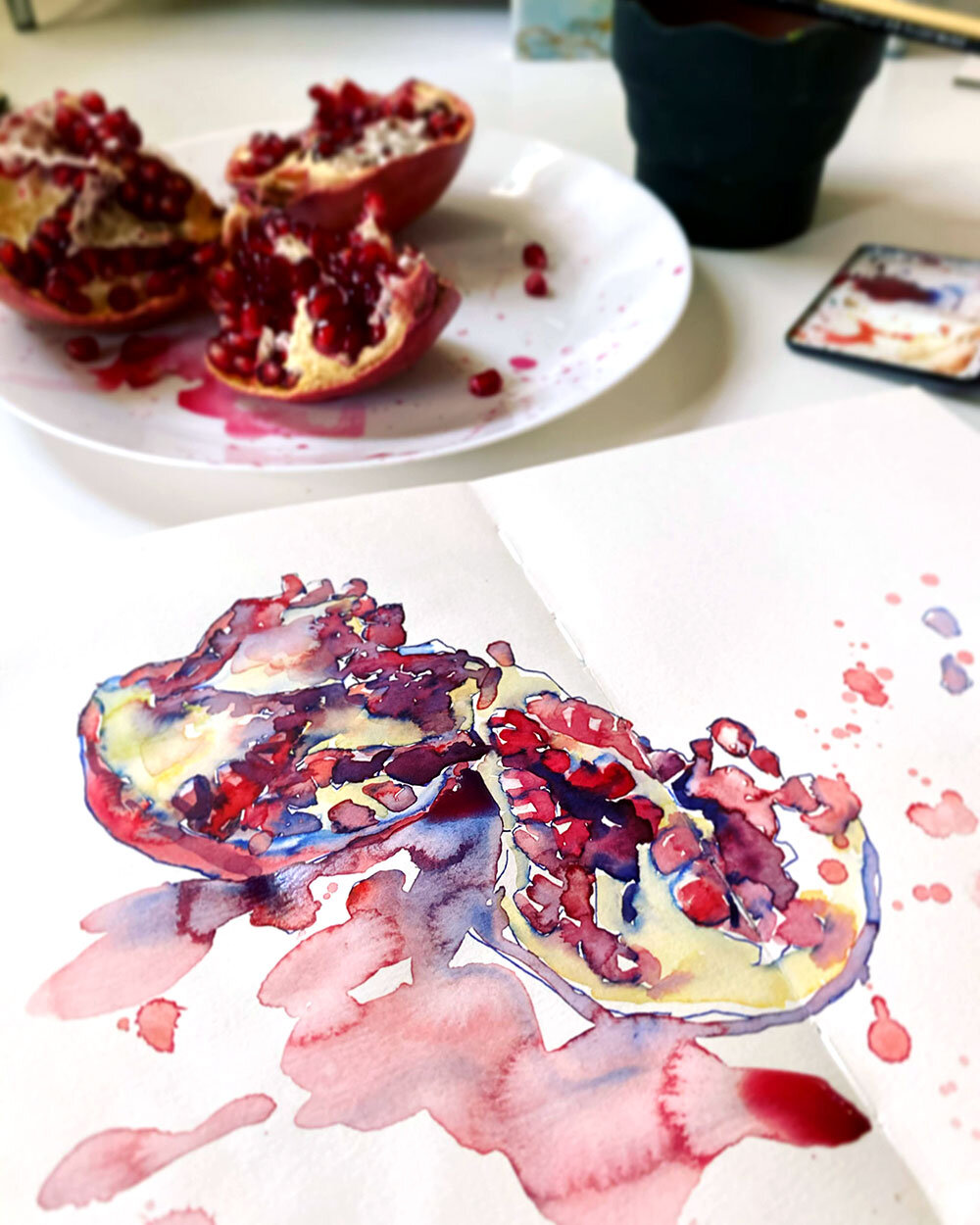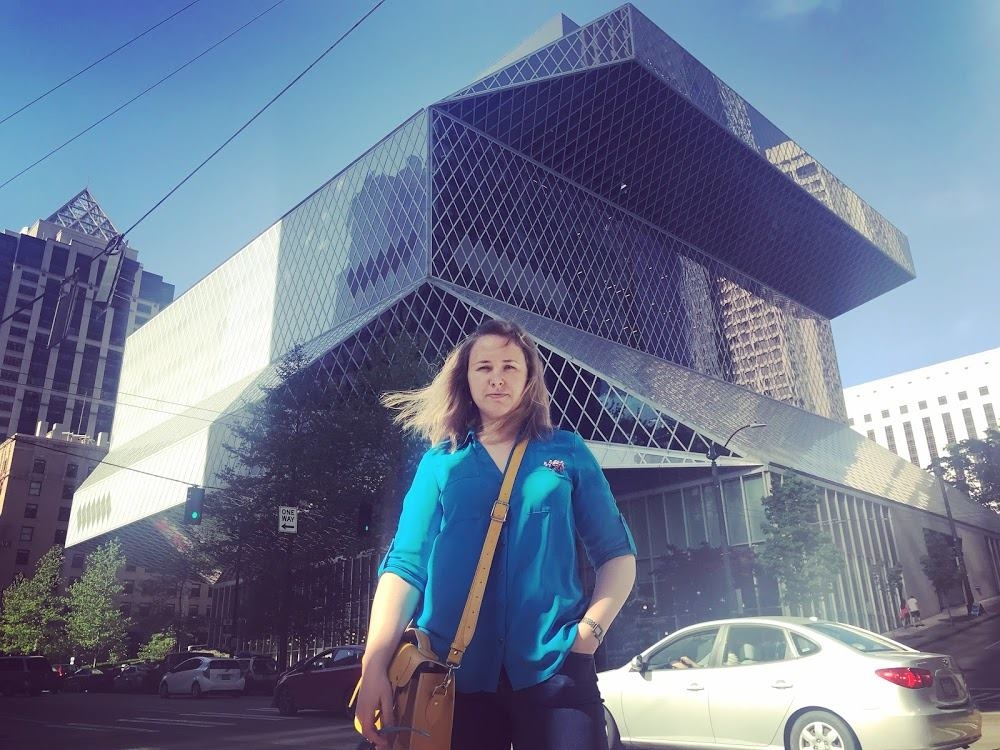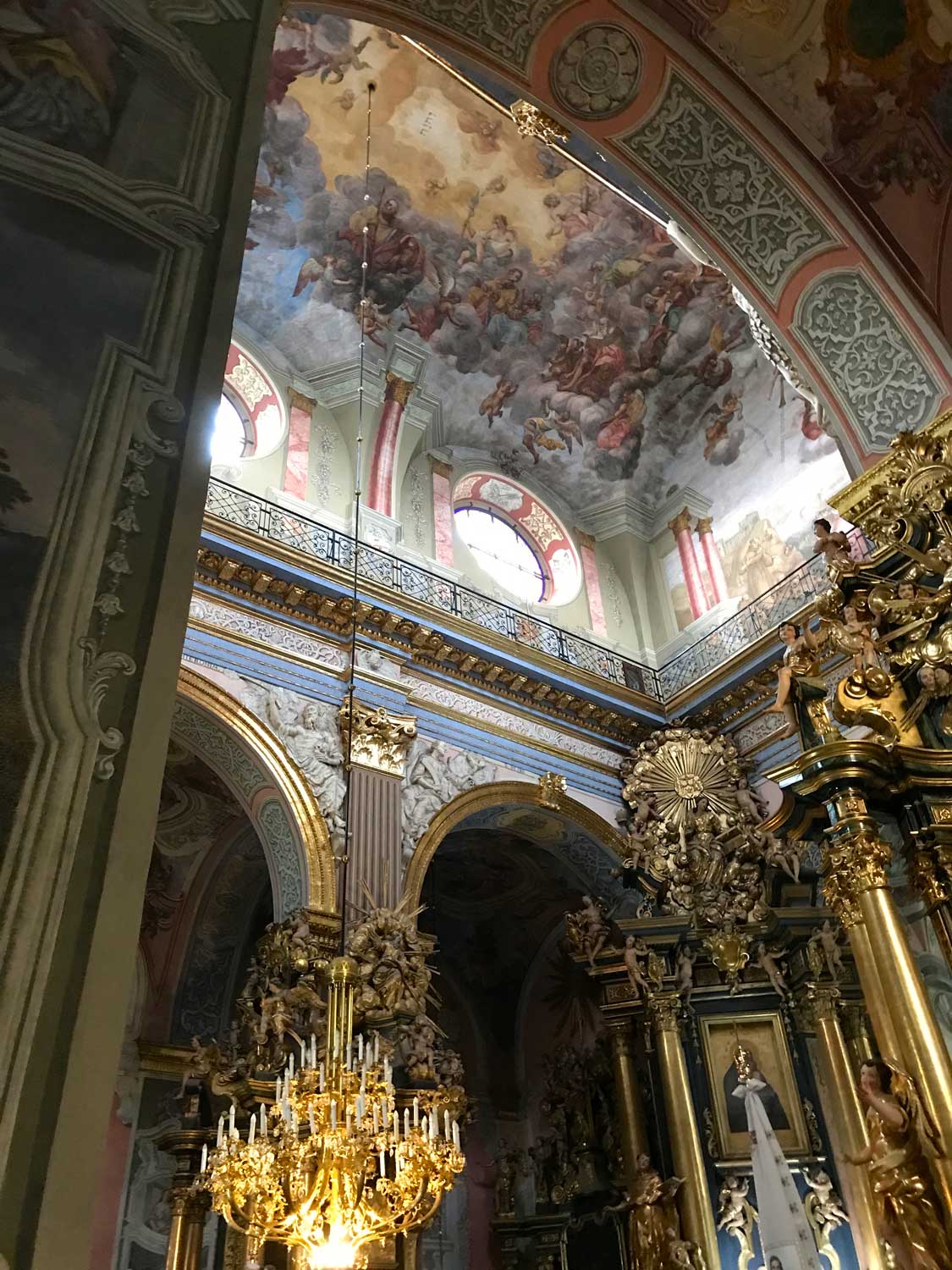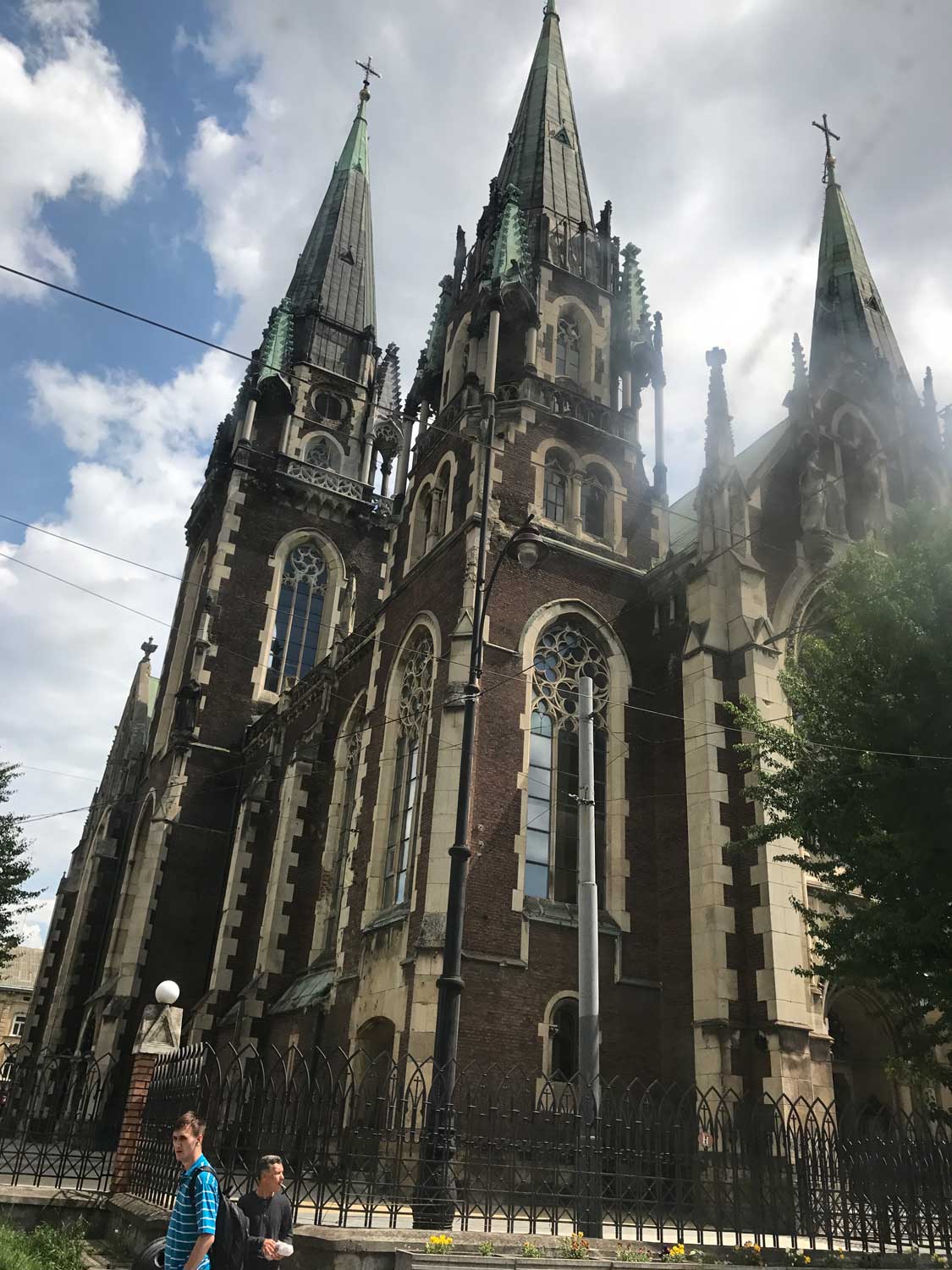I had a hard time keeping track of all the rooms Hope led me through, finally settling at the round wrought iron table of a brightly lit dining room. She had a handwritten agreement that fit on a single page of her legal pad.
I moved into the ground floor bedroom two weeks later. Olga wasn’t pleased and she kept the deposit, alleging that I clogged the toilet and flooded the bathroom. That’d be something interesting to tell her friends about the foreign architecture student.
My bedroom in Oakland Hills was the largest I’ve ever had, to date. It looked into the terraced backyard, with a hot tub right outside the bedroom and a huge collection of mature orchid plants in glazed blue pots. On cold nights, Hope wrapped her orchids in sheets to protect them from the weather. The rest of the plants were regularly maintained by the gardener.
Hope lived in this two-story (plus basement) house with her big blind dog Seamus. He was old and friendly and I’m not sure I heard him bark even once. Seamus liked to spend his time in Hope’s upstairs bedroom, an even larger room with blackout shades and a built-in TV cabinet. Hope’s favorite TV show was Six Feet Under.
Getting to the campus from Oakland Hills was an adventure. I walked down the steep streets to the nearest bus station, which took a good 25-30 minutes. The bus would then take me to another bus station, where I would transfer to another bus, and ride another half hour to UC Berkeley. Then the uphill trek to the top of the campus and the seventh floor of Wurster Hall, the worster building on campus when it comes to aesthetic choices. I could never relate to Brutalism.
The way back to the room was exactly in reverse, now a 30-minute climb back to the house from the bus station. It may have had something to do with me missing classes at a higher rate than before.
Hope was not exactly a ray of sunshine. She had a weekly therapy appointment near McArthur BART station, where she would sometimes pick me up or drop me off in her weathered Delorean. She confessed to having a daily struggle with sleep and depression, but this news was delivered to me in an entertaining bit of dark humor. Her ultra-black sunglasses were supposed to help with extreme photosensitivity, brought on by a combination of medications.
No sweat, by October of my first year at Berkeley, I myself was a regular consumer of Prozac, which was supposed to address my anxiety, chest pains, and “flat affect.”
Hope loved listening to me talk about architecture and my life in Ukraine. I suppose this was the same allure that Olga responded to but I didn’t mind it with Hope. She seemed genuinely interested and she had stories of her own to share. Her kitchen became the place we would spontaneously meet and chat.
During these kitchen chats, my eyes wandered around the kitchen and study the shiny copper pots, the spines of cooking books, most on French cuisine, and the postcards pinned to a wall and covering the fridge. I wondered who the postcards were from and why, with so many pen pals, did Hope and her fluffy white dog seem so alone in her big Oakland Hills house.
Hope was an orphan. She carried the last name of her adoptive family and her birth parents were unknown to her. In her early 70s then, she had a sarcastic view on men, and had no interest in adding one to her life. I never found out what she did for a living - I was sure she must have been a retired actress or heiress to some unknown Bay Area fortune. She seemed both carefree and tragically fragile, a short slender woman fluttering around like a hummingbird one second and shutting herself in her dark bedroom for the whole day the next.
I’m not entirely sure how I survived architecture school at Berkeley. Sometimes, I still have the nightmare where I have not yet graduated, or dropped out, or failed in some other way. I was a transfer student, a recent immigrant, a few years older than everyone else. I worked a part-time job to offset the student loan. I still learned new English words every day. I was definitely computer literate but struggled to learn new software and design projects at the same time. I used to function a lot better with a well-trained drawing hand and a single focus on design.
I could not connect with any of my architecture studio professors. All of them were male, white architect superstars. I was not a superstar. I felt that I was failing all the time.
Surprisingly, I connected just fine with all other, almost exclusively male and white, professors. Structures, acoustics, city planning, sustainable design, history of architecture, dark room photography, German - those made me feel grounded, in contrast to the unrelatable studio. Paradox?
At the studio, I felt like an imposter. What human error let me into this impenetrable top of Mount Olympus? Surely, anyone else here is so much better than me, so much farther ahead.
But outside of Wurster Hall, there was Hope. One day, as we crossed paths in her kitchen, she pointed to the black frozen bananas in the freezer in disgust and asked me what that was about.
“Oh, I was going to try a banana bread.” I had a recipe from my boyfriend’s Texan girl.. female friend. It involved salvaged bananas.
Hope raised her thin eyebrows and transferred the bananas from the freezer to the trash bucket.
“Let’s make a banana bread with no rotten bananas.”
She reached for one of her French cooking books and leafed through it, landing on the recipe I still use to make banana bread.
“Here. 2-3 bananas. We have that.”
Hope was precise in her cooking. She introduced me to the invention called a flour sifter and showed me how to measure dry ingredients by leveling the top of the measuring cup with the dull side of a knife.
She got her groceries once a week, on the same day of the week, at the Berkeley Bowl - a wonderland of organic produce, European imports, and local goodness. My strictly utilitarian relationship with food was significantly improved thanks to Hope taking me along on these shopping trips. Berkeley Bowl had my favorite muesli and cranberry walnut bread.
In the span of the seasons that I lived with Hope, we had become an odd couple of friends. Neither of us had much of a social life and so we created one together. She took me to the San Francisco Symphony, where I was dazzled by evening dresses and glorious performances with overrepresented Russian last names. I was her movie date when Pan’s Labyrinth opened at the tiny Art Deco theater in Berkeley. After the movie, she introduced me to gelato.
I lived at Hope’s Oakland Hills postcard house for almost a year. She kicked me out via a handwritten note sometime in the summer. She didn’t explain why, other than pointing out several times when I left something out that should have been put away or failed to clean something that should have been cleaned. She suggested that maybe, after my resentment related to my first few years as an immigrant, working alongside my parents at various cleaning jobs, I was subconsciously trying to make others clean up after me.
I don’t think I was anything other than clueless.
She also didn’t take to my ex-boyfriend-fiancée-unfiancee-boyfriend-husband at all. Hope had a negative gut reaction to my ex and immediately distrusted him. She shared this with me, but, of course, as a civilized lady, she didn’t press the issue. But I think it had more to do with her kicking me out than my occasional messiness.
I also wish she had pressed the issue. My own gut was still catching up with the impact of immigration and the loss of my previous long-term relationship. I was in no state to choose husbands.
Things went downhill after I moved out. I lived in a sublet studio for the rest of the summer, and then shared a two-bedroom apartment close to the campus with three other students. My depression kicked into high gear by then and I struggled to complete classwork. I dreaded going to the studio because that’s where my fear of failure stared me straight in the face. My long-distance marriage had become an escape fantasy, and I would fly to this fantasy island once a month, spend a weekend near the ocean, and come back to reality. Somehow, with the finish line so close in view, I was losing momentum and feeling more lost than ever myself.
By some miracle, I did cross the finish line. In record time, by taking summer classes and loading up on units as much as I could. I shakily walked across the stage of Zellerbach Hall and took the scroll from the hand of some important person.
Even though we never spoke again, I think that Hope, my Oakland Hills landlady, was a big part of me making it. Maybe we weren’t a perfect match, but for a moment there, we were friends. She gave me more than a temporary dwelling, exactly when I needed it.
And Hope was right. My marriage didn’t make it, the guy was a walking red flag. Six Feet Under is an excellent show. Only the best ingredients for my banana bread from then on.
